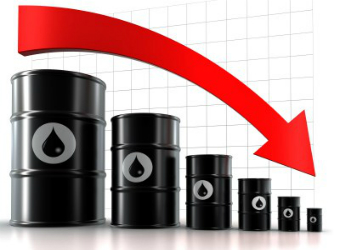Rising U.S. production and weaker refined products demand weighed on the market, traders said.
“The holiday demand surge that we get is in the rearview mirror,” said John Kilduff at Again Capital. “That, coupled with the rebound in U.S. production is helping to undercut some of the recent price strength.”
While product demand is up from a year earlier, robust stockpiles and a coldsnap in the U.S. could put a damper on demand.
Traders said political tensions in Iran, the third-largest producer in the Organization of the Petroleum Exporting Countries, had pushed prices higher.
“The protests in Iran add more fuel to the already bullish oil market mood,” said Norbert Ruecker, head of commodity research at Swiss bank Julius Baer. On Friday there was no new major outbreak of violence in the country, relieving some of the tension from the market.
U.S. West Texas Intermediate (WTI) crude futures ended Friday’s session down 57 cents, or nearly 1 percent, at $61.44 a barrel, falling from the $62.21 May 2015 high reached the previous day.
Brent crude futures fell 45 cents to $67.62 a barrel. The contract jumped to $68.27 in the previous session, also the highest since May 2015.
Oil prices have received general support from production cuts led by OPEC and Russia, which started in January last year and are set to last through 2018, as well as from strong economic growth and financial markets.
That has helped to tighten markets. U.S. commercial crude inventories fell by 7.4 million barrels in the week to Dec. 29, to 424.46 million barrels, according to data from the Energy Information Administration.
That is down 20 percent from peaks last March and close to the five-year average of 420 million barrels.
Yet, surging U.S. production could offset some of the cuts from OPEC producers, as U.S. production rose to 9.78 million barrels a day in the latest week, according to Wednesday’s report.
Drillers reduced the number of oil rigs operating in fields by 5 to 742 in the week to Jan. 5. That was 213 more than the 529 rigs in the year-ago period, General Electric Co’s Baker Hughes energy services firm said on Friday.
The U.S. oil rig count rose by about 42 percent by end-2017 compared to the levels seen during the corresponding period in 2016, as energy companies boosted spending amid a recovery in crude prices.
Given that Iran’s oil production has not been affected by the unrest, and that U.S. production will likely break through 10 million barrels per day (bpd) soon, a level so far only reached by Saudi Arabia and Russia, doubts are emerging whether the bull-run can last.
Bank Jefferies said the oil price “upside from here is not obvious to us” but added that it expects the oil market to remain undersupplied through 2018.
Julius Baer’s Ruecker said that crude prices above $60 project an “overly rosy picture.”
“Oil production disruptions (in Iran) remain a very distant threat …Disruptions in the North Sea have been removed with the Forties Pipeline system having resumed full operations. U.S. oil production surpassed the 2015 highs in October and is set to climb to historic highs this year,” he said.
Lukman Otunuga, analyst at futures brokerage FXTM, struck a similarly cautious tone, saying: “While the current momentum suggests that further upside is on the cards, it must be kept in mind that U.S. shale remains a threat to higher oil prices.”


